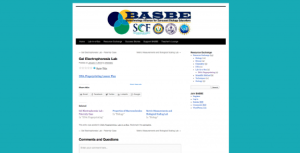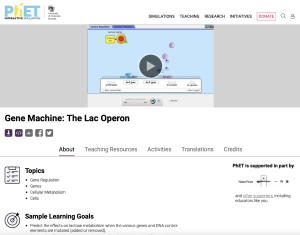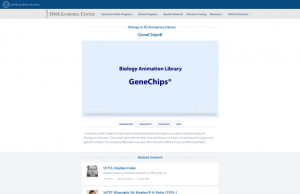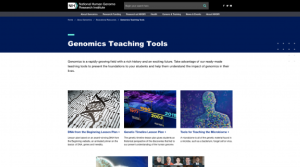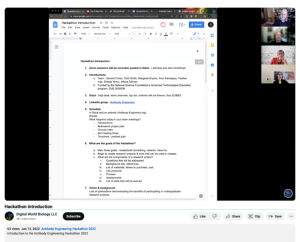Browse Resources
Resources | |
|---|---|
Lia Kent, of Stemgent's Research and Development team, has created this video to demonstrate "the proper technique for rapidly thawing hES cells from liquid nitrogen stocks, plating them on mouse embryonic feeder cells, and slowly freezing them for long-term storage." The video is also accompanied...
In the early days of DNA manipulation, DNA fragments were laboriously separated by gravity. In the 1970s, the powerful tool of DNA gel electrophoresis was developed. This process uses electricity to separate DNA fragments by size as they migrate through a gel matrix. This animation from Cold Spring...
This lab activity from the Biotechnology Alliance for Suncoast Biology Educators (BASBE) introduces the methods of RFLP analysis, or DNA fingerprinting, by using gel electrophoresis. Students will learn the role of restriction enzymes in DNA fingerprinting. Required materials, procedure and...
This lab activity from the Biotechnology Alliance for Suncoast Biology Educators (BASBE) provides instructions for conducting a gel electrophoresis lab. Students will try to solve a paternity case with this activity by obtaining a DNA fingerprint from each potential father, the mother and the child....
The PhET project at the University of Colorado creates "fun, interactive, research-based simulations of physical phenomena." This particular one deals with the lac operon. Build a gene network! The lac operon is a set of genes which are responsible for the metabolism of lactose in some bacterial...
In the early 1990s, Stephen Fodor and his team developed a technique to produce miniature arrays of biological molecules. Their work led to the first DNA chip, and became the basis of techniques for large-scale genomic studies. The company Affymetrix was spun off in the early 1990s to focus on DNA...
This video, from G. Grant Welstead, Tobias Brambrink, and Rudolf Jaenisch of MIT's Whitehead Institute for Biomedical Research, Massachusetts Institute of Technology explores how to generate iPS cells from Mouse Embryo Fibroblasts. The video is also accompanied by protocols for thawing and freezing...
As genetics and genomics research advances rapidly through the knowledge gained from the completed human DNA sequence, teachers and educators require new classroom tools to present the rich history, complexity and excitement of the world of genetics and genomics. These teaching resources include...
The consortium's mission is to bring functional genomic methods into undergraduate curriculum primarily through student research. As part of their mission, GCAT sponsors faculty workshops in DNA Microarrays and, more recently, Synthetic Biology. The consortium also provides a centralized chip reader...
This video, provided by Digital World Biology, is from the 2022 Antibody Engineering Hackathon, an event where teams collaborated to develop Course-based Undergraduate Research projects (CURES) for students studying biotechnology. In this video, presenter Sandra Porter introduces the Hackathon and...
| |
| ← Previous | Next → |


